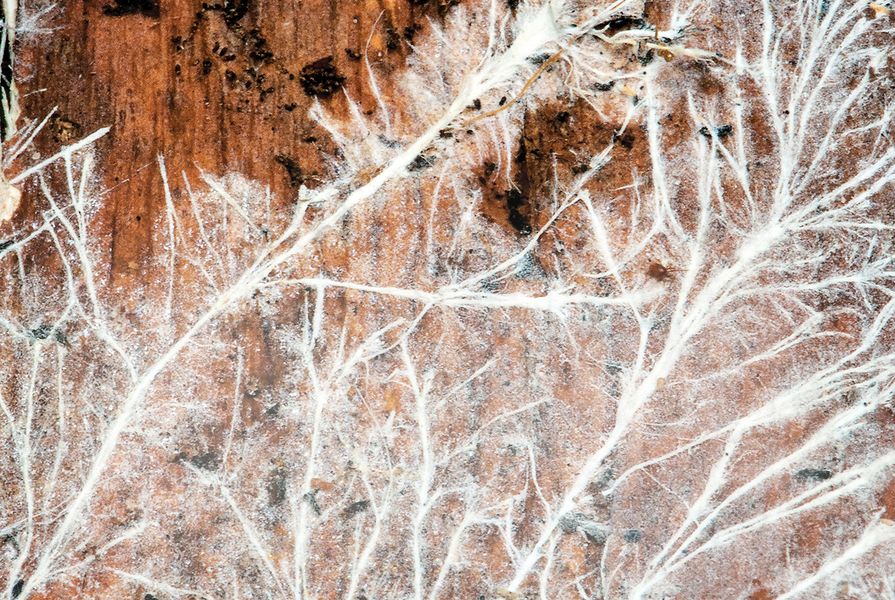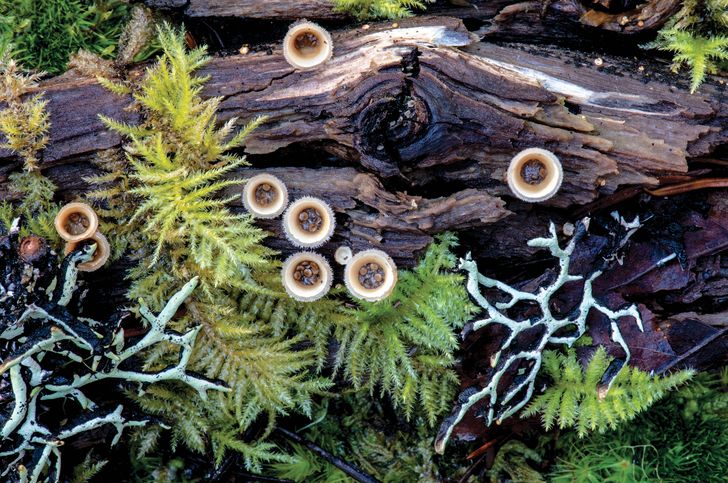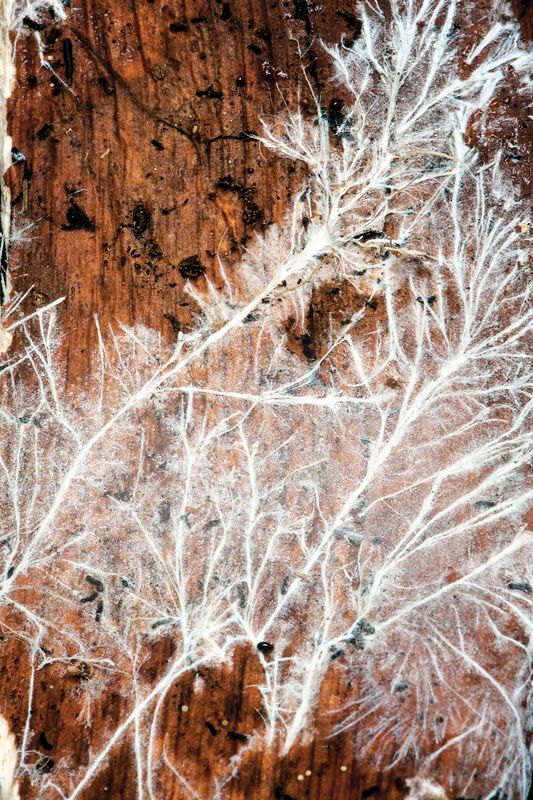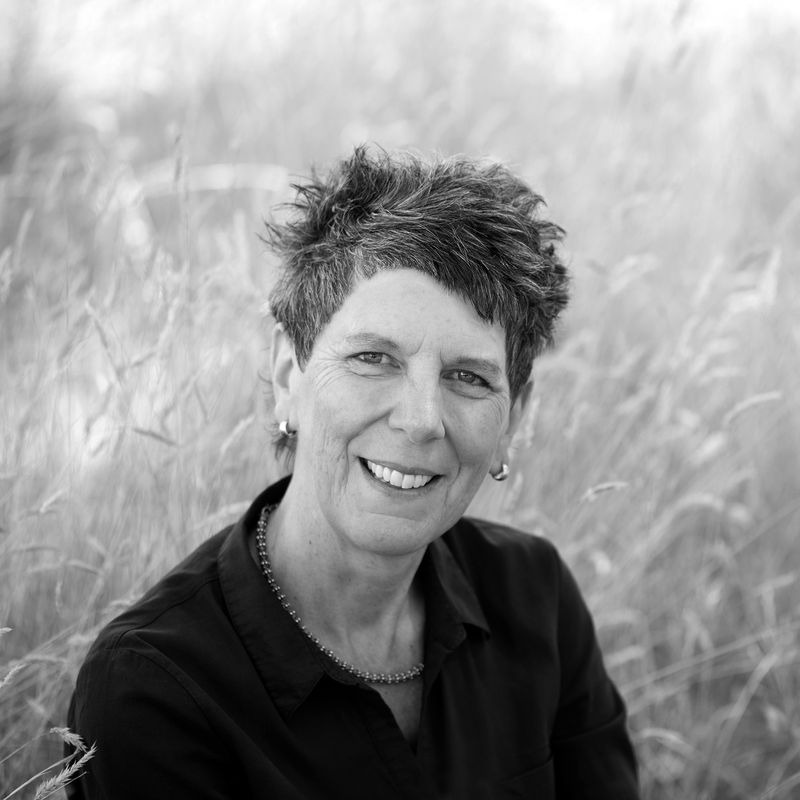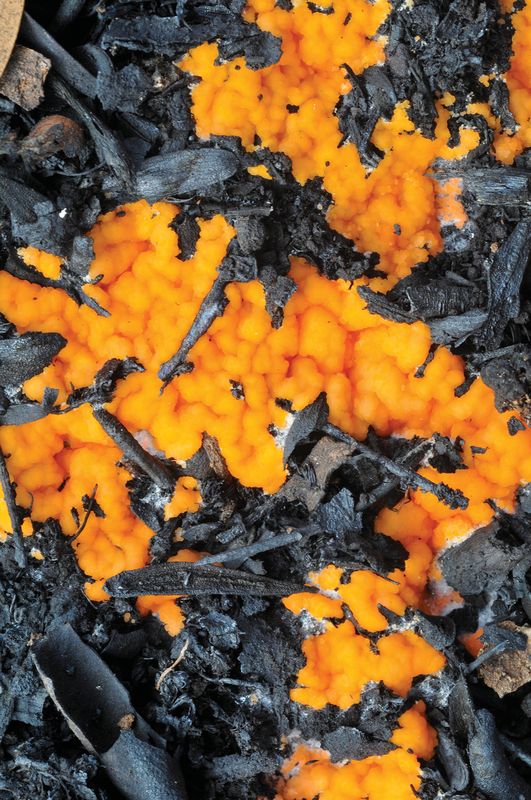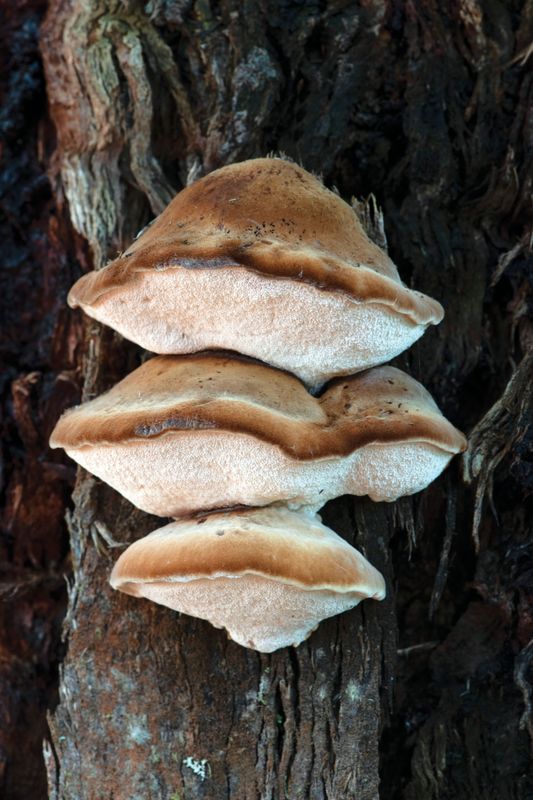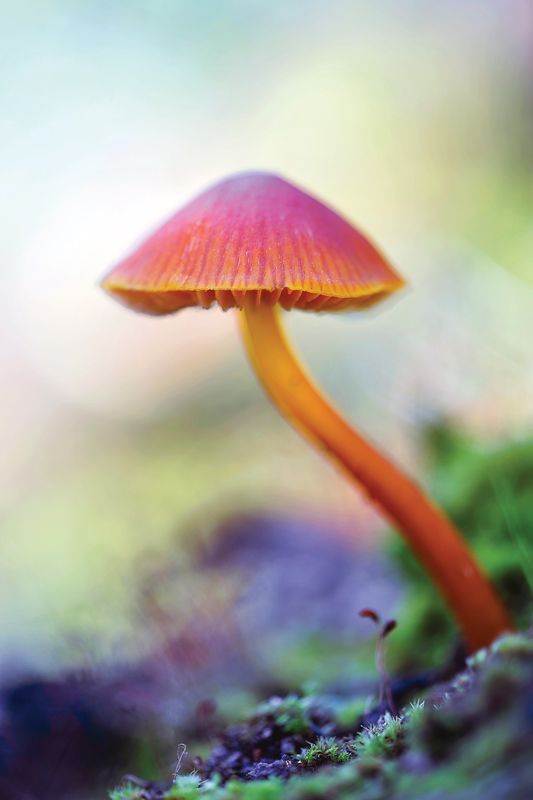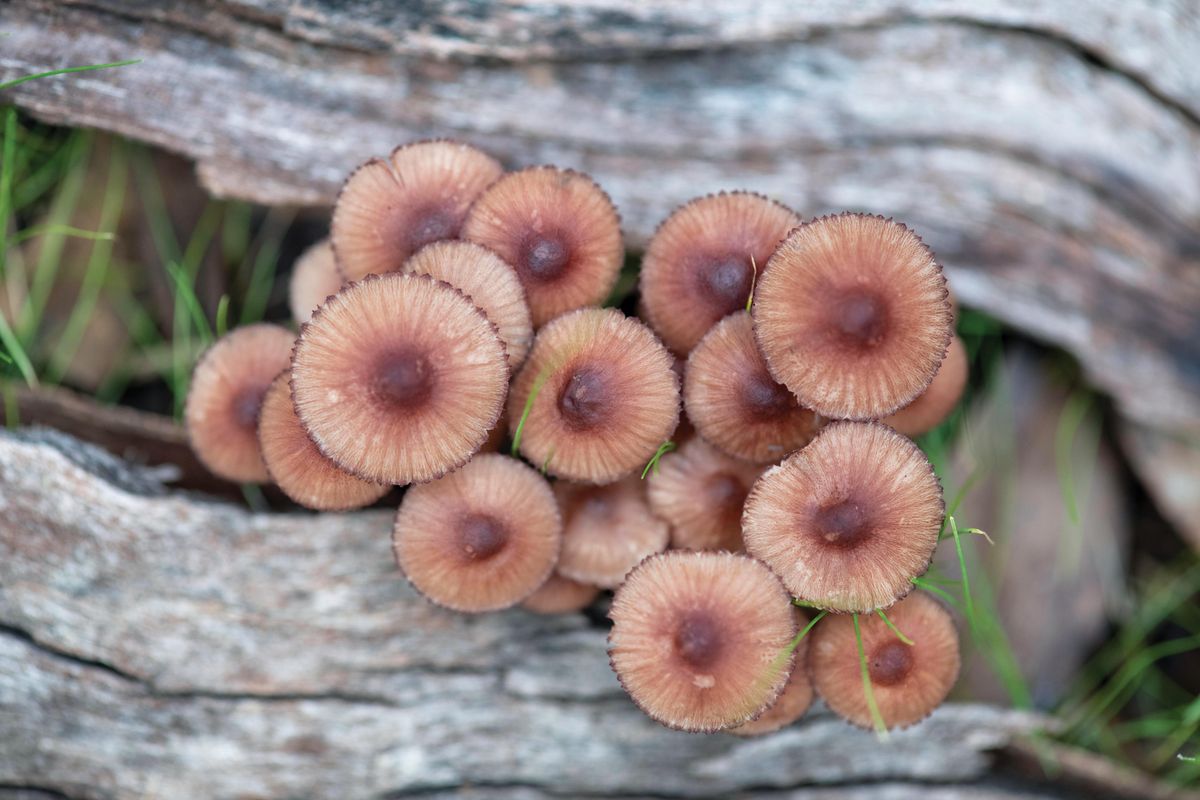Alison Pouliot is an ecologist and environmental photographer based in Australia and Switzerland. She has authored numerous books, including The Allure of Fungi (2018), Underground Lovers: Encounters with Fungi (2023) and, most recently, Meetings with Remarkable Mushrooms: Forays with Fungi across Hemispheres, to be released in September 2023. Here, she discusses the importance of fungi to ecosystems and the relationship between fungi and landscape restoration.
Emily Wong – Where do our common misunderstandings and misconceptions about what fungi are or do come from?
Alison Pouliot – It all begins with language, and fungi are not part of our vernacular … we don’t know the proper terms for them.
A lot of these misunderstandings go back a long way. Humans are naturally curious; we always try to find explanations for things. Yet, we didn’t recognize the actual fungus organism itself – the living, growing, feeding part – as it was obscured, it was out of sight, it was underground. We couldn’t make sense of fungi, so all these theories arose. Some of them touched on truths, but many of them didn’t. In the Anglosphere, either we’ve lost or we’ve never had the curiosity about them in the same way as many continental European, or Asian, or South American, or African cultures. The good news is that’s changing. We’re in a bit of a fungal turn or a fungal awakening: we’re now not only hungry to know about their great ecological significance, but we’re recognizing the utility of them beyond mushrooms as food and medicine – for producing building products and packaging and 3D printing, and for fashion and design and so much more. It’s an interesting and exciting time.
What are some of the key functions of fungi in terms of ecosystems, and how are they entangled with plants, plant life and ecosystem health?
I’m sure you’ve rolled over a log or scratched around in the leaf litter and seen that tapestry of long fibres that are the hyphae. Collectively known as the fungus mycelium, it effectively puts an architectural scaffold or tapestry into the soil. When fungi are coursing through the soil, looking for food, growing, dividing, they’re holding the soil particles apart, creating gaps and spaces, making it aerobic and inhabitable for creatures like worms and snails and bugs and other insects, which mechanically break down organic matter by biting into it with their mandibles or mouthparts.
Fungi also secrete polysaccharides that bind organic matter – this is important when you’ve got a fire or you’ve had disturbance to soil, through logging or some other disturbance. Take that very friable surface of the soil after a fire – the first rain just washes it away. Fungi bind soil and organic matter, but also hold it apart. This allows water to very gently filter through and trickle down to those deeper horizons. The soil is like a sponge; it has a lot of oxygen in it. Fungi are vital in that.
Probably the key thing fungi do is recycle organic matter through enzyme secretion. Without fungi breaking down recalcitrant compounds like lignin and cellulose, we wouldn’t be able to unlock those nutrients and make them available to plants and other organisms.
Fungi break down compounds like lignin and cellulose in everything from tiny twigs to huge logs.
Image: Alison Pouliot
A composite of lichens and fungi can help to recycle organic matter, unlocking nutrients and making them available to other organisms.
Image: Alison Pouliot
What are the greatest threats to fungi and their place in the ecosystem?
The big one is loss of habitat. Whenever we have disturbance, through large-scale logging and agriculture, or repeated burning at short intervals, the system takes longer to recover. When we lose habitat, fungi have a smaller area to occupy, there’s more competition, they lose space, they lose resources.
Disturbance to soil is critical – we rarely find fungi in agricultural soils because of the disturbance we get through ploughing and tilling. Turning the soil over breaks up that network of mycelium. Another issue is compaction from the hard hooves of cattle or heavy machinery – the soil gets compacted, the oxygen gets pushed out, the mycelium gets crushed and the other organisms are compromised or destroyed.
Also, there are a lot of question marks around the way we use fire in Australia. Recent research is questioning whether fighting catastrophic fire with smaller fires
is the best approach. Inappropriate use of fire – when it’s used in an ecosystem that’s not able to respond or isn’t adapted to fire, or when it’s too frequent, or too intense, or too vast – could be a real threat. Some fungi can respond to fire, [but] many can’t. Once you lose that diversity of species, you lose resilience in the system.
When I drive through new housing estates, I often see an aesthetic of tidiness that homogenizes the natural part of those projects. Instead of having a diversity of organic matter on the ground, by having logs and sticks and leaves and different bits of trees, everything gets put through a chipper. This limits the number of invertebrates and fungi. You end up with a less resilient system, or a system that’s only in its early stages of succession and never reaches maturity. This constant over-management, prioritizing aesthetics over ecology, is in itself a threat.
You’ve said that discussions about conserving fungi are often focused on tools and strategies for their protection, but rarely touch on the tensions between aesthetics and conservation. Could you comment on this?
I work as an environmental photographer and my first interest in fungi was aesthetic. It was their aesthetics that took me to the science. There’s often tension in this idea of flagship species though, because some of the most important habitats are the ones we overlook because they’re not aesthetically beautiful. I’m interested in how we can use aesthetics to attract public interest while being aware of the limitations. The most interesting mushrooms often conceal their backstory. I think to be really effective, conservation has to use aesthetics, but maybe to expand that concept of aesthetics: it’s not just the beautiful, it’s the bizarre as well.
It’s particularly difficult when you can’t actually see it all – so much of it is super-small or underground.
That’s why they’ve been so maligned, or rather ignored, for so long. They’re largely invisible.
Fungi such as White Punk (Laetiporus portentosus) play a vital role in hollow formation.
Image: Alison Pouliot
While flagship species like waxcaps attract public interest, the bigger fungal conservation picture requires interest in the entire kingdom.
Image: Alison Pouliot
What are some challenges involved with conserving and restoring fungi in landscapes?
Restoring fungi is different to restoring vegetation. We can take a seedling, dig a hole, put in some nutrients, put the seedling in, water it, put a tree guard around it, and then watch it grow. But we can’t just pick up a mycelium out of the soil and transplant it. For a start, we don’t how big it is: is it as big as a 20-cent piece, or is it many tens of metres big? Is it connected to a tree and can’t survive without that tree? Does the fungus produce its sporing bodies underground, like a truffle fungus, and so we need to bring along the mammal that is responsible for the distribution of its spore?
Certainly, we can get some organic matter from nearby and introduce it to an area where organic matter has been lost, but there’s a risk of introducing things you don’t want. Probably the best we can do is to maximize the diversity of the habitats and substrates that fungi are likely to colonize. Organic matter has always got propagules of mycelium or spores in it; so long as we create lots of different habitat types, some of those spores have a chance of finding the right combination of conditions to germinate and form mycelium.
Putting trees in the ground feels active, but with fungi, a lot of it is about letting things be. We’re not good at that – we like to control and manage. If we can just say, “Right, we’re going to let this tree drop its leaves and sticks, and we’re going to leave it on the ground,” the fungi will come back. But most fungi don’t produce mushrooms, or visible sporing bodies, so you have to have faith that you’re doing the right thing. In the meantime, there’ll be fears about fire, so it all gets raked up. We need a dramatic change of thinking about what sticks and leaves are and what they support. This is happening – I’m witnessing it. And while it’s great that we’re making an effort to restore damaged ecosystems, protecting them in the first place is always a better option.
Is there a difference between urban environments and more regional landscapes, in terms of thinking about the management of landscapes?
In urban environments, we’re often having to re-create spaces – an old parking lot, an abandoned rubbish tip – and we’re starting from scratch, so it’s a slower process, and there is more pressure from pollutants. But putting fungi into the equation is a fantastic starting point. When you restore anything – whether you’re building a garden from scratch, or trying to rehabilitate a burned or damaged area, or just trying to maintain what you’ve got – think about fungi.
If you look at where we choose to burn, it’s often based around trying not to compromise endangered vegetation communities or charismatic mammals or birds. No one ever says, “Have we got a fungal community here that could be threatened?” They’re not even in the equation. They haven’t been part of conservation initiatives, at least not until the last few years. Virtually none of the national park management plans in Australia include fungi and, if they do, it’s in a negative sense – from the perspective of how pathogenic fungi are a threat to biodiversity. Fungi are rarely considered a valuable and essential component of biodiversity.
What’s happening overseas? Are there initiatives that are starting to push these ideas and actions further?
The Global Fungal Red List features species that are perceived to be threatened in some way. It doesn’t give them any legal standing, but it does put them on the conservation agenda. When someone does a conservation project, or a development project, fungi are [now] part of the equation. The fact that people are becoming aware of fungi and understanding what they are means the movement is starting to gather some momentum.
Charcoal cups (Anthrocobia mulleri) are among the fungal species that have adapted to cope with fire.
Image: Alison Pouliot
What are your hopes for the future of fungi conservation in Australia, given accelerating climate change, agricultural production methods, and urbanization?
I’d love to see fungi truly integrated as part of biodiversity conservation, because if we continue to try to practise biodiversity conservation without including them, we can’t do a proper job. We need a holistic, bigger-picture approach. We don’t necessarily need a special category called “fungal conservation” – they need to be incorporated within biodiversity conservation. I think we’re heading there.
And what are some broader implications of including fungi as an essential part of our understanding of biodiversity?
I think that by including fungi, we think more expansively. We don’t just walk into a forest and go, “Yeah, there’s that tree species or animal species.” We wonder if there’s some kind of interconnectivity. I think fungi expand the way we think about systems, processes and interconnectivity.
Fungi bring a broader way of thinking, not just about what fungi are, but about what a forest is, or what an ecosystem is, or what nature is, or what life is. They challenge us to open our minds, to broaden our thinking and to be more inclusive.
Source
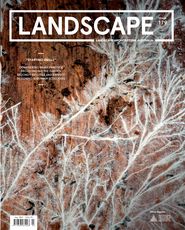
Practice
Published online: 30 Aug 2023
Words:
Emily Wong
Images:
Alison Pouliot,
Valérie Chételat
Issue
Landscape Architecture Australia, August 2023

